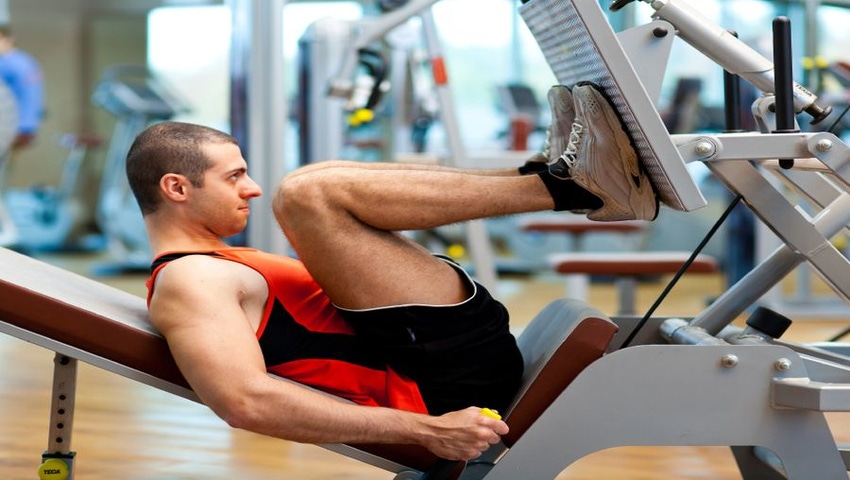
New research has found an optimized curcumin extract (as Longvida®, from Verdure Sciences) improved exercise recovery by limiting inflammation related to muscle damage, although it fell short of reducing subjective muscle soreness. The research was conducted by scientists from North Texas University, Denton, who published their results online in the journal BBA Clinical on February 18.
The patented extract was developed by Verdure Sciences and neuroscientists from the University of California, Los Angeles (UCLA). A special feature of this extract is its use of SLP™ Technology to reach target tissues and deliver efficacious levels of free curcumin at lower daily supplement dose levels.
The study follows the researchers’ prior pilot study that identified the optimal Longvida dose needed (400 mg/d) to limit serum inflammatory cytokines (signaling molecules) in humans. Using this optimal dosage, they focused the intervention study on the effect of Longvida on exercise-Induced Muscle Damage (EIMD) and delayed onset muscle soreness (DOMS) that can impact subsequent training and activities of active people,
The researchers recruited subjects from the campus of North Texas University, excluding anyone who had undergone regular resistance training in the previous six months; had a leg muscle or orthopedic condition, arthritis or other lower-body chronic inflammatory injury; had regularly taken curcumin foods more than twice weekly, curcumin supplement in the past six months and/or NSAIDs (non-steroidal anti-inflammatory drugs) at least 3 times weekly; and any other condition in the lower extremities that would affect completion of the study’s resistance exercise protocol.
In the end, 40 male and female subjects were enrolled. The subjects completed a muscle strength test about 10 days prior to the muscle damaging training session. The strength test was repeated two days after the initial test to allow the researchers to calculate workloads for the muscle damage protocol. Researchers used stratified randomization to assign the subjects in an effort to balance both gender and muscle strength across the groups. Two days prior to the muscle-damaging resistance exercise, the subjects were given supplements via double blind design containing either 400 mg/d Longvida or placebo (rice flour). The supplements were consumed daily until three days after the exercise protocol ended.
The exercise protocol consisted of six sets of 10 reps of leg presses with loads set based on the prior muscle strength testing. The subjects were asked to maintain a five-second eccentric contraction on the leg press in order to maximize the duration of contraction and EIMD. The subjects were constantly spotted, and resistance was adjusted as necessary to ensure the target eccentric contraction. There were five-minute rest periods between sets.
After attrition and non-compliance, 28 male and female subjects between the ages of 17 and 21 years completed the study. They were assigned one of two groups: curcumin (n=16) or placebo (n=12). The median BMI (body mass index) was 22.7 for the curcumin group and 22.3 for the placebo group.
Researchers gauged subjective muscle soreness in the quadriceps after exercise through physical testing. They also measured muscle soreness during common activities of daily living (ADL) by using a modified version of the Knee injury and Osteoarthritis Outcome Score (KOOS), which covers both muscle and joint soreness and the impact on ADL.
In order to analyze post-exercise inflammation, the researchers collected blood from the subjects prior to the resistance training and daily for four days post-training. They measured serum inflammatory cytokines—interleukin-6 (IL-6), IL-8, IL-10, and tumor necrosis factor-alpha (TNF-α)—as well as creatine kinase (CK), a marker of muscle damage.
Results showed there was peak muscle soreness at two days post-EIMD, but no differences in soreness was found between the treatment groups. For ADL soreness, the peak was also day two, and there were also no significant differences between the groups. The results were more promising for inflammation and muscle damage.
Both groups experienced increased CK levels after EMID, but curcumin supplementation kept CK levels lower than the placebo did, and CK levels in the curcumin group returned to baseline within two days post-EIMD. By contrast, the placebo group had a large spike in CK levels at both day one and day four post-EMID.
Results on inflammatory cytokines was mixed. Compared to placebo, curcumin supplementation significantly inhibited IL-8 and TNF-α, but not for IL-6 and IL_10. However, the researchers noted while the difference for IL-6 compared to placebo wasn’t significant, the IL-6 levels on curcumin showed a response similar to with IL-8 and TNF-α.
“The key finding was that oral curcumin supplementation (400 mg/day) significantly blunted serum creatine kinase, IL-8, and TNF-α concentrations during recovery from EIMD," the researchers wrote. Further, they noted the lack of significant difference on muscle soreness was somewhat expected because they powered the study to detect changes in TNF-α, but not necessarily changes in muscle soreness. “Given the nature of subjective muscle soreness measures and perceived soreness during ADL, these measures tend to have a lower effect size than more stable biological measures."
They added that observed biological reductions may be due to curcumin-induced reduction in secondary chemical injury to the muscle during recovery. “Unfortunately, the present study does not resolve confusion regarding the ability of curcumin to reduce muscle soreness following EIMD," they wrote. “Future research should seek to systematically examine the nature of the relationship between oral curcumin dose, blood curcumin concentration (via LC–MS), blood inflammatory cytokines, and the EIMD/DOMS time course."
About the Author(s)
You May Also Like






.png?width=800&auto=webp&quality=80&disable=upscale)